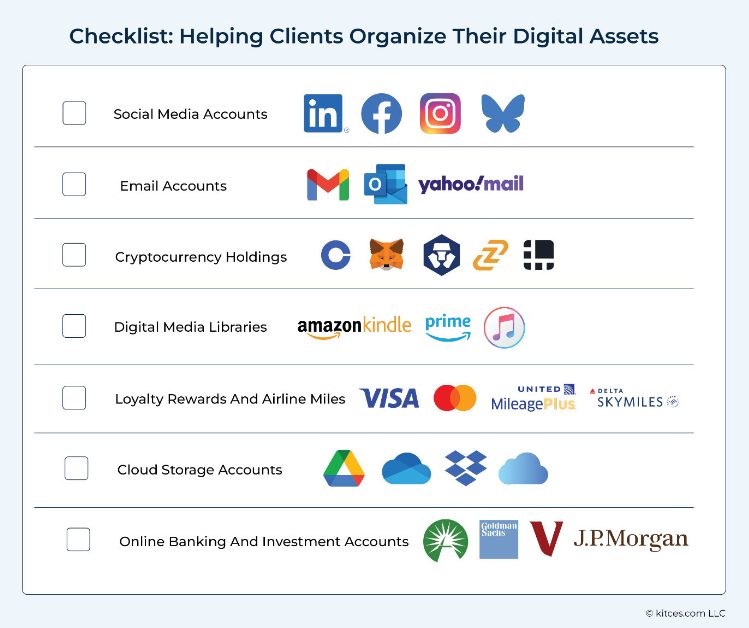Digital assets encompass a wide range of online accounts and property, from financial holdings to sentimental items like photographs and digital media libraries. While cryptocurrency is the most well‐known example, even loyalty rewards and social media accounts hold personal and financial value. Yet, contrary to popular belief, providing theirs with usernames and passwords – while
crucial – may not be enough.
Because platform privacy policies often dictate how digital assets are handled after a person’s passing, unauthorized access can create serious legal and security concerns, including identity theft and privacy law violations. Unlike traditional assets, which are governed by established inheritance laws that dictate how they are handled after a person dies or becomes incapacitated, digital assets often fall under individual service providers ‘terms of service. Given these risks, it’s essential that estate plans include clear, legally recognized instructions for accessing digital assets.
Where to start?
- Create a comprehensive inventory of digital assets, from banking and email accounts to cloud storage and loyalty programs.
- Ensure that provisions about digital assets are added to the will or trust are key –especially as regulations may allow wills and trusts to supersede a platform’s access restrictions.
- Store this information securely in a digital vault, making it easily accessible to heirs.
- Maintain – and periodically review – an up‐to‐date estate plan that provides for digital assets ensures continued access and security as rules, accounts, and assets evolve.
When digital assets are given the same attention and care as physical assets, clients and their heirs can have greater peace of mind that their digital legacies will be preserved and transferred smoothly as well!
What Are Digital Assets?
“Digital asset” is a broad term that encompasses a wide range of account types and online property. Some of the most widely recognized digital assets include cryptocurrency, social media accounts, personal photos and videos, digital music or movie libraries, and even gaming content.
Social media accounts, for example, may hold intangible but significant value in terms of personal connections, followers, and potential business revenue. Photographs, videos, and digital files may carry sentimental value or could even be monetized for their content, while music and movie libraries, often purchased via platforms like Apple or Amazon, are part of an expanding universe of digital media ownership. Even less obvious assets, such as loyalty rewards (e.g., frequent flier miles or credit card points), can have significant monetary value. Essentially, any asset that is stored in a digital format and provides value to its owner – whether emotional, functional, or financial – can theoretically be considered a digital asset.
This digital Checklist provided by Michael Kitces (a Research Advisor to Financial Planners) will give you an idea of all places to look for your digital assets.

If you are interested in learning more about digital vaults, please contact us and we will help you choose one that fits your needs.


